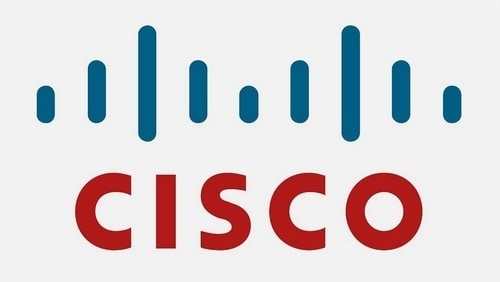The Marketing mix of Cisco analyses the 4Ps of Cisco, including the Product, Price, Place, and Promotions. Two computer scientists at Stanford University founded Cisco Systems Inc. in 1984; in 1990, the company went public. Earlier on, computers on Local Available Networks (LAN) could not link with those outside the network until Cisco’s first commercial router was introduced in 1986. With different networking protocols, computers were connected despite the geographical distance, and with the Multi-Protocol Router, Cisco became a global leader in networking.
Over time, Cisco has captured new markets and faces stiff competition. The following competitors are some of Cisco’s competitors.
- Alcatel-Lucent: competitor in edge routing
- HP is a competitor in Ethernet switching.
- Aruba is a significant competitor for wireless LANs in North America.
- Polycom, a competitor in video
- Juniper: competitor in core internet Routing and security markets
- Others include Avaya, Microsoft, CheckPoint, IBM, and Brocade, to mention a few.
Cisco uses the 4Ps as a tactical tool in implementing its product line, portfolio, marketing, and sales promotion strategies.
About Cisco
- Type: Technology Company
- Industry: Networking hardware and computer software
- Founded: December 10, 1984
- Founder: Leonard Bosack and Sandy Lerner
- Headquarters: San Jose, California, United States
- Area served: Worldwide
- Key people: Chuck Robbins (Chairman) and Chuck Robbins (CEO)
- Number of employees: 79,700
Table of Contents
Cisco Product Strategy
Cisco provides networking solutions for small businesses and enterprises through different products and services. Its business model and good positioning, promotions, and repositioning enable it to constantly increase its market share and brand value in line with sales and maintain a good connection with customers.
The Product Mix of Cisco in 2023 is as follows (Source).
- Networking: This category includes Cisco’s extensive networking hardware and software products. Networking is a fundamental aspect of Cisco’s offerings, encompassing various technologies for building and managing networks.
- Security: Cisco provides various security solutions for protecting networks and data in today’s digital world. This includes firewalls, VPNs, and other cybersecurity tools.
- Collaboration: This area covers Cisco’s products and services to facilitate cooperation and communication within and between organizations. This includes video conferencing solutions, business messaging apps, and other collaborative technologies.
- Observability: This relatively new category likely encompasses tools and services for monitoring and managing the performance and health of networks and applications. However, the sources didn’t directly mention specific details about the products in this category.
- Services: Cisco offers various services to support its products, including technical support, professional services, and training.
Cisco Place Strategy
This is an example of a distribution channel through which Cisco supplies its products and services to customers in different target markets and industry segments. It is important to note that the set channels sometimes differ depending on the type of customers.
Cisco reaches its customers directly through creating an online portal called Cisco Consumer Online (CCO). This portal enables customers to purchase products and pay for services directly, depending on their needs.
When doing direct marketing, the internet is Cisco’s distribution, advertising channel, brand, and target audience. This media markets products as per consumer requirements, thereby increasing sales and improving profit margins.
Cisco’s place strategy, which focuses on how and where its products and services are made available to business customers and consumers, can be summarized in the following key points:
- Global Distribution Network: Cisco has a vast global distribution network, allowing it to serve customers in numerous countries worldwide. This network includes direct sales channels and partnerships with resellers, distributors, and system integrators.
- Online and Digital Presence: Cisco leverages its online platforms, including its comprehensive website and digital marketplaces, for product information, sales, and customer support. This digital approach customers’ evolving needs customers in a digitally connected world.
- Physical Offices and Facilities: Cisco maintains a significant physical presence with offices, innovation centers, and research facilities globally. These locations serve as operational bases, customer engagement, and support hubs.
- Channel Partnerships: Cisco heavily relies on channel partners, including value-added resellers, service providers, and independent software vendors, to extend its market reach and provide localized support to customers across different regions.
- Customer Experience Centers: The company operates several customer experience centers worldwide. These centers are designed to showcase Cisco’s technology solutions, provide interactive experiences, and facilitate deeper customer engagement.
Cisco Pricing Strategy
The various price methods Cisco uses in setting product prices include cost-based pricing, which depends on the cost of product features and production cost; competitor pricing, which depends on prices by competitors; and market-led pricing.
Cisco’s pricing strategy is a sophisticated blend of value-based pricing, tiered offerings, price, and market segmentation analysis underpinned by a focus on innovation and customer value. Here’s a deeper dive into their approach to price:
- Value-Based Pricing: Cisco’s pricing strategy is primarily grounded in the value its products and services bring to customers. This means prices are set based on the perceived value or outcomes the products deliver, especially regarding performance, reliability, and security.
- Tiered Product Offerings: Cisco offers products at various tiers, from basic to premium, to cater to different market segments. This tiered approach allows them to address the needs of both small businesses and large enterprises with varying budgets and requirements.
- Subscription and Service-Based Pricing: With the shift towards cloud computing and managed services, Cisco has increasingly adopted a subscription-based pricing model for many of its software and service offerings. This provides customers flexible and scalable options, aligning costs with usage and needs.
- Competitive and Market-Responsive Pricing: Cisco operates in a highly competitive market and often adjusts its pricing in response to market conditions, competitor actions, and technological advancements. This dynamic pricing strategy helps them remain competitive while protecting their market position.
- Bundling and Integrated Solutions: Cisco often bundles hardware, software, and services into integrated solutions, which are priced in a way that offers better value compared to purchasing each component separately. This approach not only simplifies the purchasing process for customers but also enhances the overall value proposition of Cisco’s offerings.
Cisco’s pricing and product strategy also reflects its commitment to delivering high-quality, innovative solutions while remaining adaptable to its global customer base’s diverse and changing needs.
Cisco Promotion Strategy
Promotion informs people about the product, thereby persuading them of its usage. With the promotion’s success, the product purchasing behavior of customers, consumers, and clients is greatly influenced.
Cisco uses advertising to connect with customers and create and introduce brand-new products. The organization of advertisement is done via the internet, blogging, online promos, direct marketing, and public relations.
Through direct marketing channels, Cisco avoids intermediaries. Direct marketing methods of reaching potential customers include e-marketing, telephone, telemarketing, and direct mail. Other direct market campaigns are Cable Television Infomercials and Online Shopping. These two marketing strategies are essential in obtaining direct responses from the company and target clientele.
Some Recent Video ads and Print ads of Cisco are:
Liked this post? Check out the complete series on Marketing Mix

